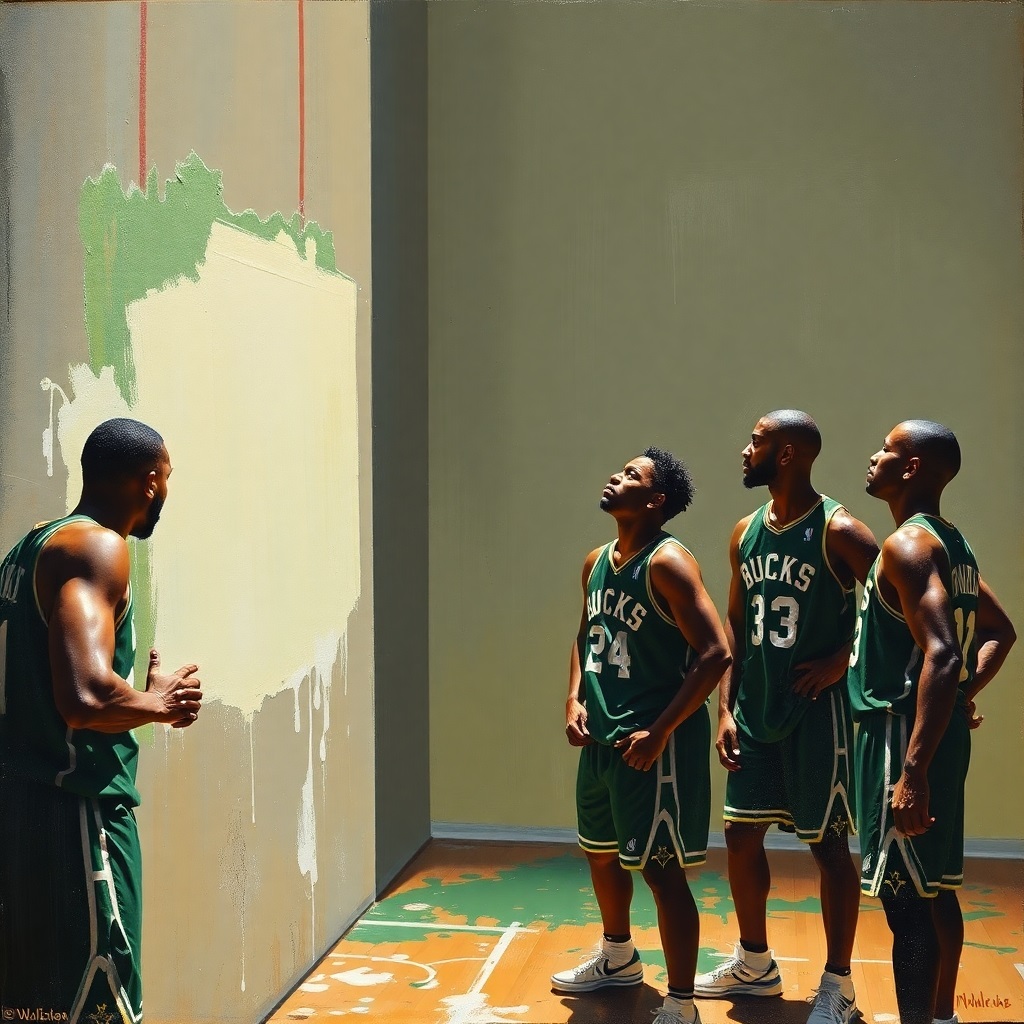The Milwaukee Bucks’ TV ratings can be influenced by a variety of factors, and while they’ve had periods of strong viewership, there are reasons they might not consistently achieve top-tier ratings compared to other NBA teams. Here’s a breakdown of potential reasons based on available context and general trends in sports media:
- Market Size is no excuse: Milwaukee is a smaller media market compared to cities like Los Angeles, New York, or Chicago but that means nothing as analyzed here. Smaller markets typically have fewer households, which naturally limits the total viewership numbers. For instance, in the Milwaukee DMA (Designated Market Area), one rating point equals about 8,685 households, far fewer than in larger markets where a single point represents significantly more viewers. Even when the Bucks perform well locally—like their 41.5 rating for Game 6 of the 2021 NBA Finals—it doesn’t translate to the massive national numbers that teams from bigger markets can generate. But if they played more spectacular basketball it wouldn’t matter.
- National Appeal and Star Power: Giannis Antetokounmpo is a well known superstar, but who wants to watch him? He doesn’t have the same broad, casual-fan appeal as the Lakers with LeBron James or Warriors with Stephen Curry. The Bucks’ lack of consistent excellence in recent years—outside of their 2021 championship—reduces their draw even more. That ring looks more and more like an extremely lucky exception. Casual viewers often tune in for teams with ongoing narratives or multiple marquee names, and the Bucks’ supporting cast, while talented (e.g., Damian Lillard), hasn’t always captured the same attention partly because Giannis doesn’t let them.
- Performance and Narrative: TV ratings often spike with success or compelling storylines. The Bucks saw a 60% increase in local ratings over two seasons (2018-19 to 2019-20) on FOX Sports Wisconsin, peaking at levels not seen in nearly 20 years, thanks to the 2021 title run. However, recent seasons have been marked by playoff disappointments (e.g., first-round exits in 2023 and 2024), which can dampen national interest. The Bucks haven’t been that great lately with inconsistent performance that reduces their priority for national broadcasts and viewer excitement.
- Competition and Scheduling: The Bucks’ national TV slate (e.g., 27 games in 2024-25 across ABC, ESPN, TNT, and NBA TV) is solid but not the highest in the league. Teams like the Lakers or Warriors often get more slots due to market size or star power, even in down years because viewers know Lebron or Curry will always make it spectacular. Unlike Giannis.
- Regional vs. National Divide: Locally, the Bucks do well—e.g., a 3.4 HH rating in 2019-20 on FOX Sports Wisconsin, second-highest in the NBA at the time. But national ratings depend on broader appeal. The 2021 Finals against the Suns averaged 9.9 million viewers, up 32% from 2020 but down 38% from 2019, partly because two smaller-market teams lacked the draw of a Lakers or Warriors matchup. This suggests the Bucks’ ceiling is capped by the perception as a “boring team” story, even with a title.
The Bucks’ style of play under coaches like Mike Budenholzer (and now Doc Rivers) has often leaned on a methodical, efficiency-driven system. During their peak years—say, 2019-20 or the 2021 championship run—they relied heavily on Giannis Antetokounmpo’s particular type of dominance in the paint which is boring as watching paint dry, a drop-and-defend scheme with bigs like Brook Lopez, and a “let it fly” three-point philosophy. It’s effective—Giannis bulldozing to the rim or kicking out for open shooters won them a title—but it’s never the flashiest. Compare that to the Warriors’ free-flowing motion offense with Curry’s off-ball wizardry or the Lakers’ highlight-reel dunks from LeBron, and the Bucks can feel much less electric. Nothing really ever happens in a Bucks game.
Some fans call their games “predictable” or “one-dimensional,” especially when Giannis is the focal point without much secondary flair. Damian Lillard’s addition in 2023 was supposed to juice things up—his clutch gene and deep range are made for TV—but injuries and a clunky fit have muted that impact so far. Data backs this up indirectly: the 2021 Finals, despite a Bucks win, averaged 9.9 million viewers, solid but nowhere near the 15.6 million for the 2019 Raptors-Warriors series, which had more stylistic contrast.
Viewers crave pace, trickery, or star-on-star drama. The Bucks’ half-court grind, especially in recent uneven seasons, does not hook the scroll-through crowd. Local ratings still hold strong (e.g., 3.4 HH in 2019-20), showing Milwaukee loves it, but nationally, “boring” could stick when they’re not in title-or-bust mode.
Giannis being “the most boring player ever” is a also more and more a thing. His stats are bonkers—back-to-back MVPs, a Finals MVP with a 50-piece to clinch it—but if you don’t vibe with the bulldozer vibe, the hype can feel overhyped. No ankle-breaking crossovers or trash-talking swagger, just a guy who runs hard, dunks harder, and smiles a lot. Fans often clown him for the “boring” label too—less personality flash than a Kyrie or Ja Morant. Maybe that’s the rub: he’s less entertainer, more machine. Less of an NBA player and more the European style that only cares about winning. That is an insult to many fans of the NBA as evidenced by Giannis constantly falling in the social views tables, jersey sales and other metrics.
The Bucks lean into that identity, though. Their whole deal is efficiency over flair—Giannis plus shooters, rinse, repeat. It wins games (sometimes titles), but it’s not lighting up your TV.

Leave a Reply